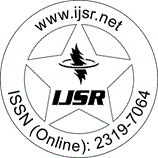Downloads: 1
India | Pathology | Volume 14 Issue 10, October 2025 | Pages: 1140 - 1146
Histopathological Study of Prostatic Lesion and Expression of p63 Immunohistochemical Marker in Tertiary Care Centre
Abstract: Background: Prostatic lesions, including benign prostatic hyperplasia (BPH) and prostatic carcinoma, are common in aging males. Histopathology plays a critical role in diagnosis; however, the overlap in features often leads to diagnostic challenges. p63, a basal cell marker, has emerged as a valuable immunohistochemical marker in differentiating benign from malignant prostatic lesions. Objective: To evaluate the utility of p63 immunohistochemistry in distinguishing benign from malignant prostatic lesions in a tertiary care setting. Methods: This prospective observational study was conducted at Gajra Raja Medical College, Gwalior, from April 2023 to October 2024. 80 prostatic biopsy specimens were analyzed using histopathology and p63 immunohistochemistry. Data was collected on patient demographics, clinical findings, histopathological diagnosis, PSA levels, and p63 expression. Descriptive statistics and Chi-square tests were used for analysis. Results: The study found that 88.75% of cases were p63 positive, correlating with benign diagnoses, while 100% of malignancies were p63 negative. PSA levels were significantly elevated in malignant cases. Histologically, BPH with chronic prostatitis was most common, while prostatic adenocarcinoma accounted for 10% of cases. Conclusion: p63 immunohistochemistry is a reliable tool for differentiating benign from malignant prostatic lesions, offering high specificity and sensitivity. Combined with PSA testing, it improves diagnostic accuracy in ambiguous cases.
Keywords: Prostatic Lesions, p63, Immunohistochemistry, Benign Prostatic Hyperplasia, Prostate Cancer
How to Cite?: Dr. Jyoti Singh, Dr. Shilpi Sikarwar, Dr. Prashant Shrivastava, Dr. Sudha Iyengar, "Histopathological Study of Prostatic Lesion and Expression of p63 Immunohistochemical Marker in Tertiary Care Centre", Volume 14 Issue 10, October 2025, International Journal of Science and Research (IJSR), Pages: 1140-1146, https://www.ijsr.net/getabstract.php?paperid=SR251018092424, DOI: https://dx.doi.org/10.21275/SR251018092424
